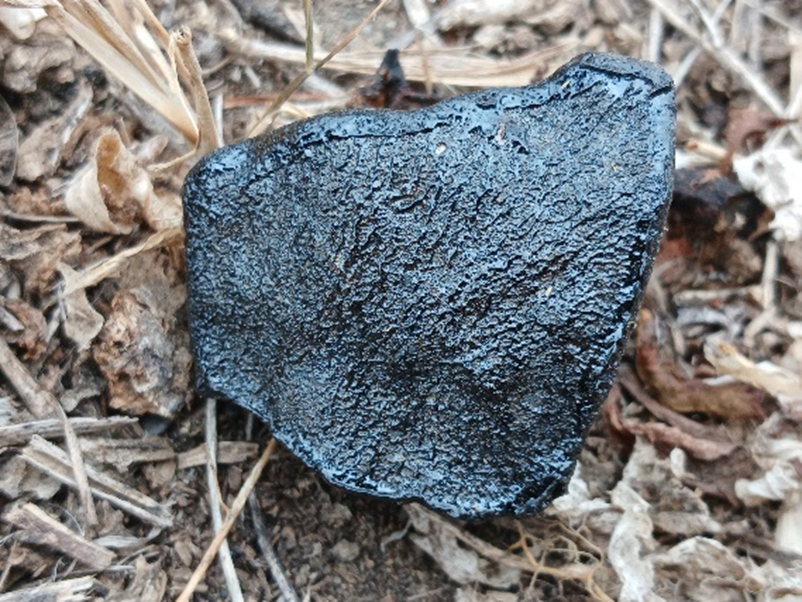NQWEBA meteorite fall (~530 g, Howardite) in Nqweba (Kirkwood), Eastern Cape, South Africa at ~6:50:40-~6:50:50 UTC on 25 August 2024
Last update: 29 September 2025 (19:15 CEST)
Ek was by ‘n inkyk by my oupa op die plaas en ek het net my honde bal gespeel en toe het ewe skielik het rumbelling sound gekom in donderweer geklink en toegank net ‘n klip uit die lug uitval. (Eli-zé du Toit)
[I was visiting my grandfather on the farm and I was just playing ball with my dogs and then all of a sudden a rumbling sound came in thunder and then a stone just fell out of the sky.]
Six meteorite fragments of a single mass (HED) weighing 87.8 grams (5 cm in diameter) of the daytime bolide at ~8:50.40-~8:50.50 SAST (~6:50:40-~6:50:50 UTC) on 25 August 2024 above Eastern Cape in South Africa have been found by Eli-zé du Toit, the 9-year-old daughter of Jesica Botha, near a Wild Fig tree while sitting with her mother and step-grandmother on the porch in her grandparents’ house in Nqweba (formerly Kirkwood), about 20 metres south from the fall location. While she was playing ball with her dogs the girl, her mother and her grandfather heard a rumbling sound for several seconds which increased in loudness. Moments later Eli-zé heard the meteorite fall through a Wild Fig tree nearby with a rustling sound. She immediately went looking for what had fallen. She found the largest piece of the meteorite at location 33°23’44.4″S, 25°20’30.6″E. It had fragmented into six fragments on impact. When she touched the meteorite fragments which according to her “felt warm like a cup when you’ve just finished drinking the tea or coffee from it on the outside, but the inside felt cold”. The initial warmth of the meteorite’s fusion crust faded quickly since as she had carried the fragments back to the porch they had already cooled down. The largest fragment weighs less than 63.1 grams and is less than 4 cm in diameter. After some discusssion Eli-zé and her mother Jesica Botha went to look for more fragments under the tree and found five smaller fragments weighing 12.6, 4.7, 4.0, 2.4, and 1.0 grams. Eli-zé wondered how a stone could fall from the sky. Her mother did some research on the internet and realized that the stone could in fact be a meteorite. Later Jesica Botha made the find public by posting photos of the fragments to The Snow Report Southern Africa website. Dr Carla Dodd contacted her and organized the delivery of the samples to the Department of Geosciences at Nelson Mandela University (NMU) in Gqeberha (formerly Port Elizabeth) in the evening of 26 August 2024 when Jesica and Eli-zé handed the meteorite fragments over for scientific analysis. It was decided that the official name of the meteorite fall would be Nqweba pronunciation (MP3). Zoë van der Merwe, MC Fereira and Stephen Sharp filmed the fragmenting daylight bolide entering the atmosphere above an area between Gqeberha and George and moving in an east-northeastern to northeastern direction while having a walk on the dunes near St. Francis Bay, Eastern Cape. They heard at least three detonation booms which died away in a low rumble at around 6:55 UTC. At 10 a.m. on 3 September 2024 University of the Witwatersrand, Rhodes University, and Nelson Mandela University held a joint press conference about the meteorite fall at Nelson Mandela University in Summerstrand, Gqeberha. The preatmospheric size of the meteoroid is estimated to have been about 1-1.5 metres in diameter and the pre-impact velocity was about 20.1 m/s. The main flare and fragmentation event was calculated to be at an altitude of about 38.2 kilometres above location 33.6 S, 24.5 E at ~8:50.49 SAST (~6:50:49 UTC) radiating an energy of about 2.6e10 Joules with a calculated total impact energy of 0.092 kilotons of TNT.
Paragraph 32 of the South African National Heritage Resources Act of 1999 regulates the legal status of meteorites found in South Africa as ‘heritage objects’.
A science team from Rhodes-, Nelson Mandela-, and Witwatersrand- universities found 9 additional meteorites (found between 10 and 20 days of the fall) in an area of 4 km2. They weigh 42.9, 22.2, 134.1, 35.6, 9.7, 47.0, 63.1, 67.5, and 20.2 grams. On 13 September 2025 the fall was registered in the Meteoritical Bulletin Database as Nqweba.
The university search team’s first find: a 47-gram Nqweba specimen 2-1 (~3 cm across) with its intact glassy fusion crust. Photo: Roger Gibson
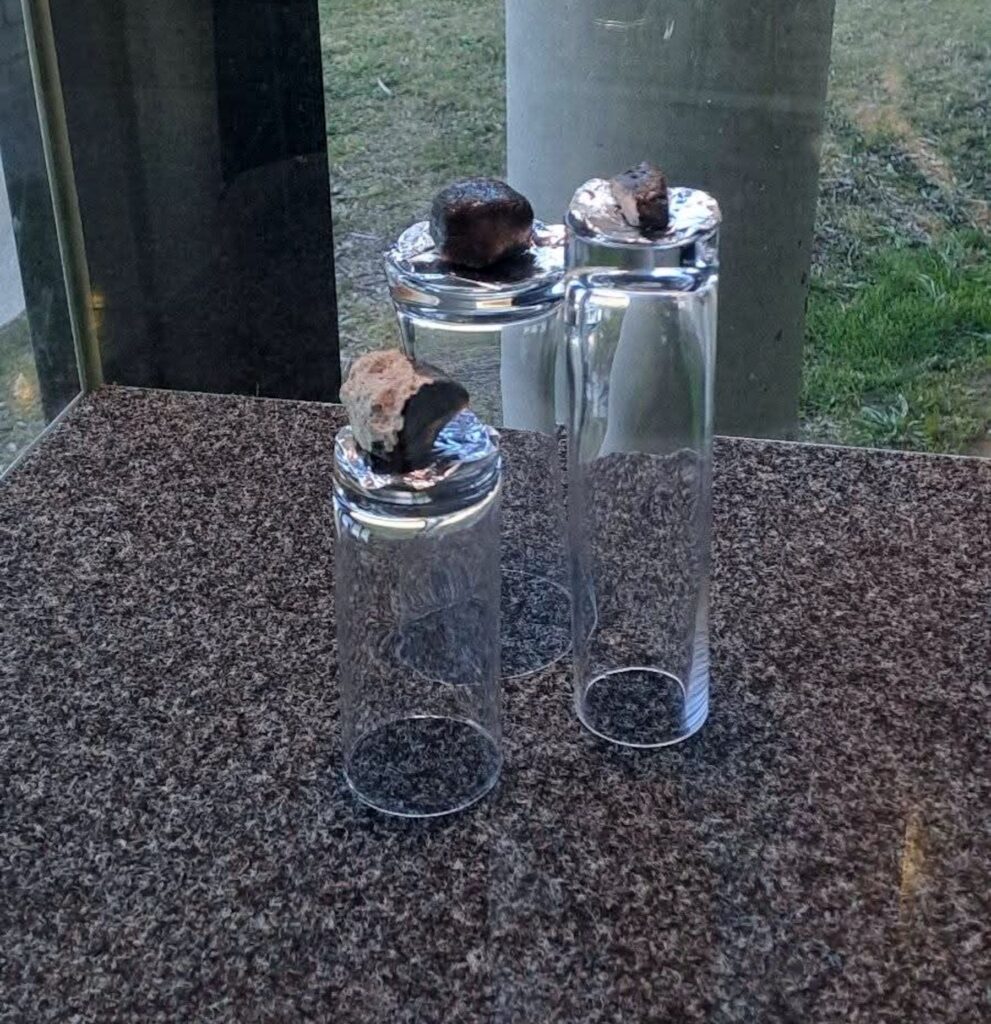
Nqweba specimens exhibited during the public lecture ‘Fire in the sky and rocks from Space’at Nelson Mandela University on 23 September 2025. Photo: Mandela University Faculty of Science
MEDIA
Snow Report (25 August 2024)
“Space junk” that fell in Eastern Cape was a car-size meteorite (University of the Witwatersrand, Johannesburg, 26 August 2024)
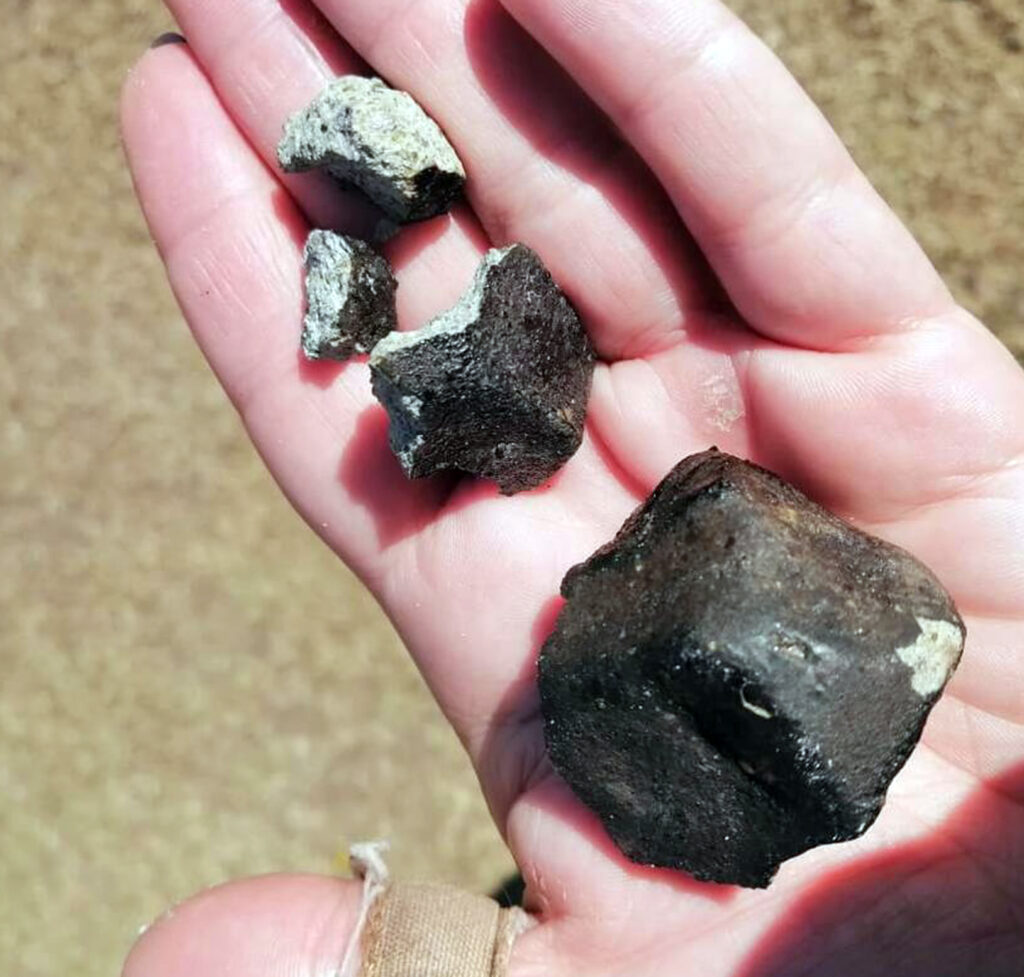
Photo: Jesica Botha/Snow Report (25 August 2024)
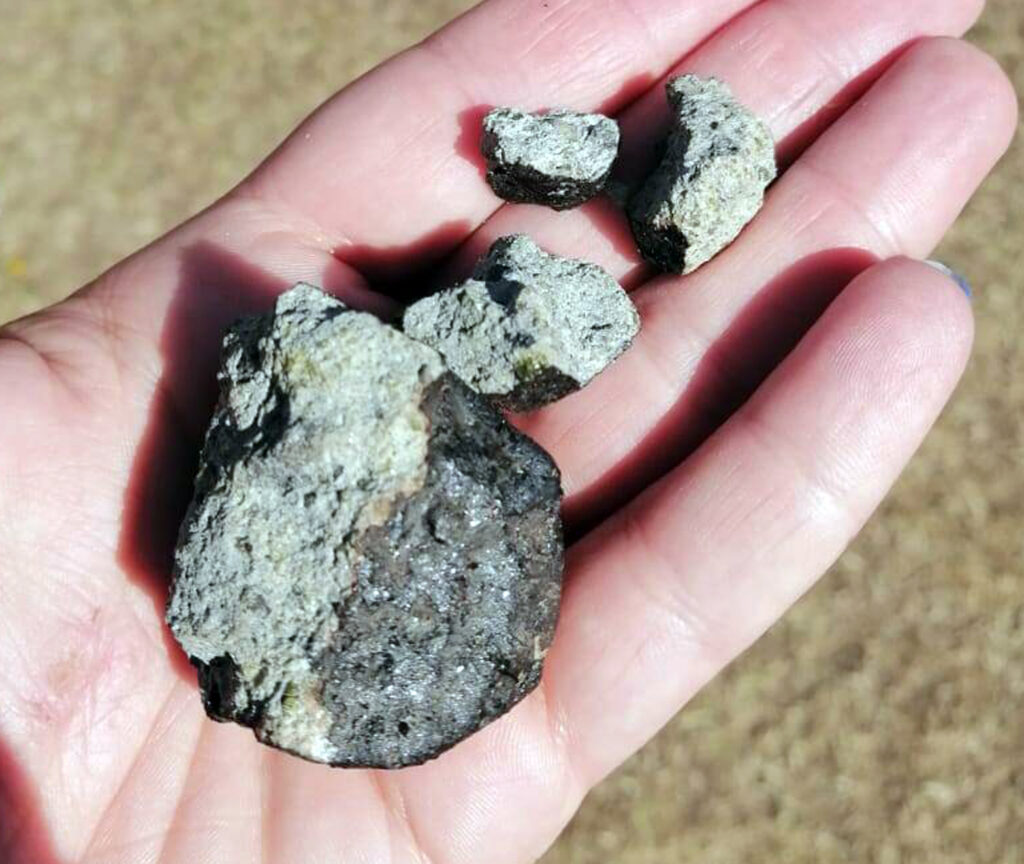
Photo: Jesica Botha/Snow Report (25 August 2024)

Photo: Jesica Botha/Snow Report (25 August 2024)
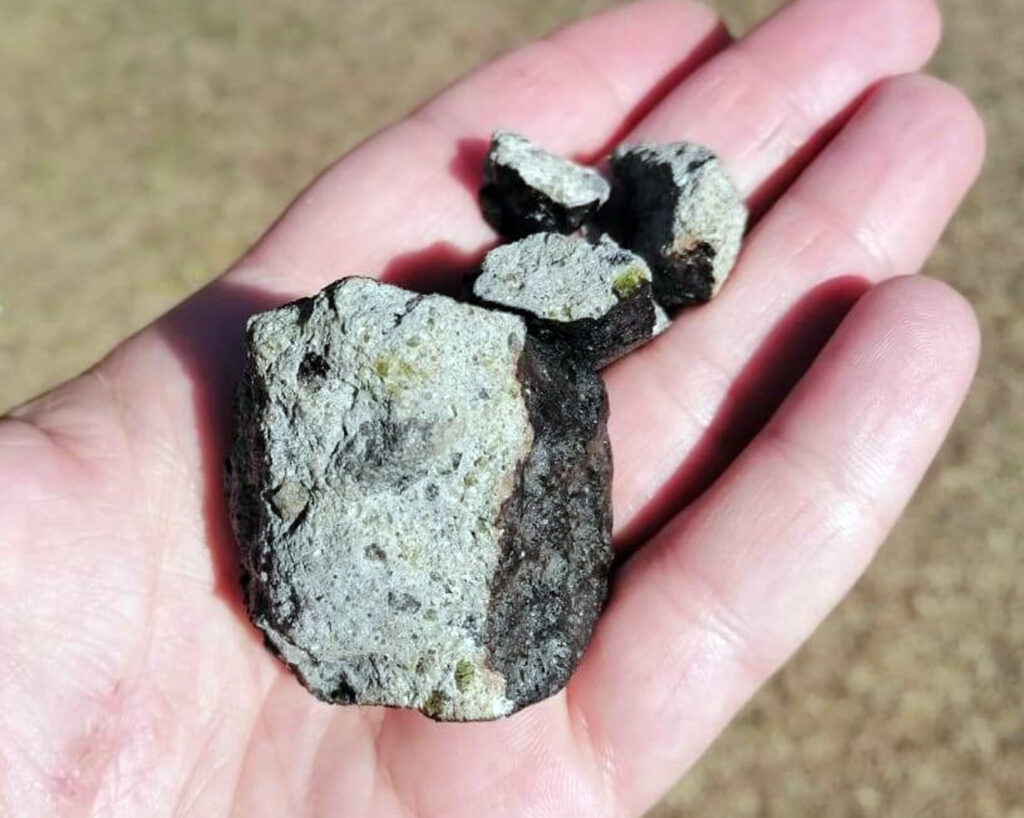
Photo: Jesica Botha/Snow Report (25 August 2024)
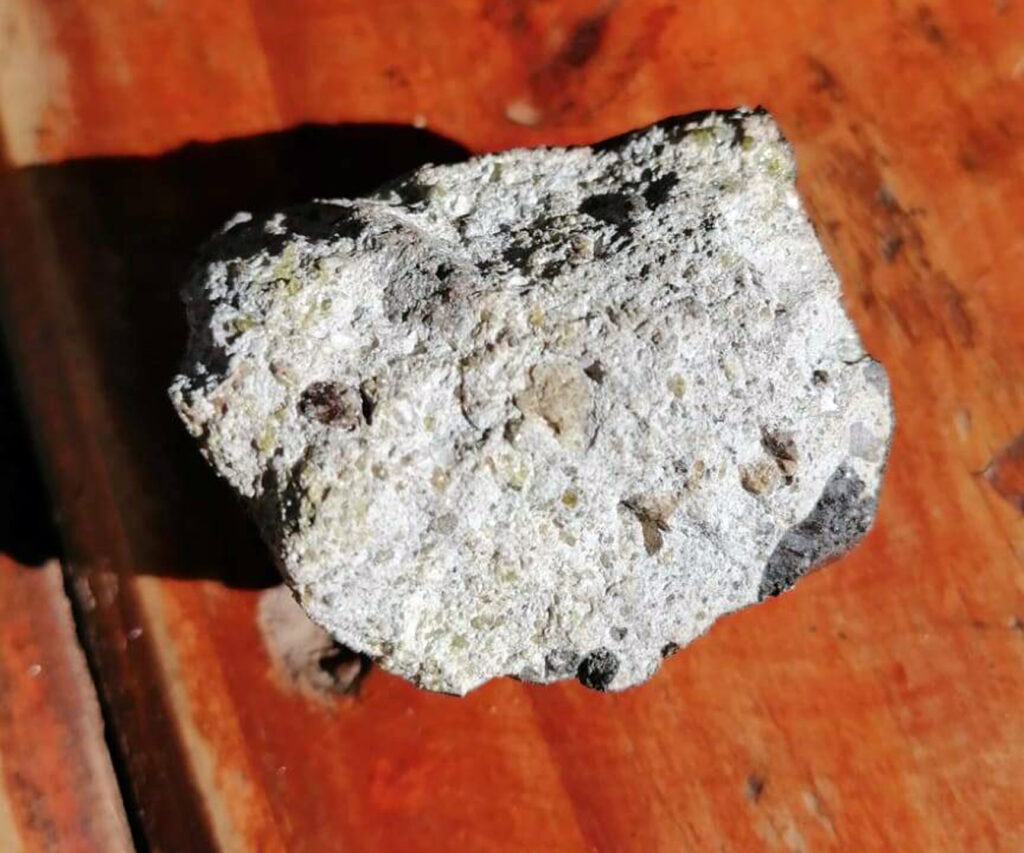
Photo: Jesica Botha/Snow Report (25 August 2024)
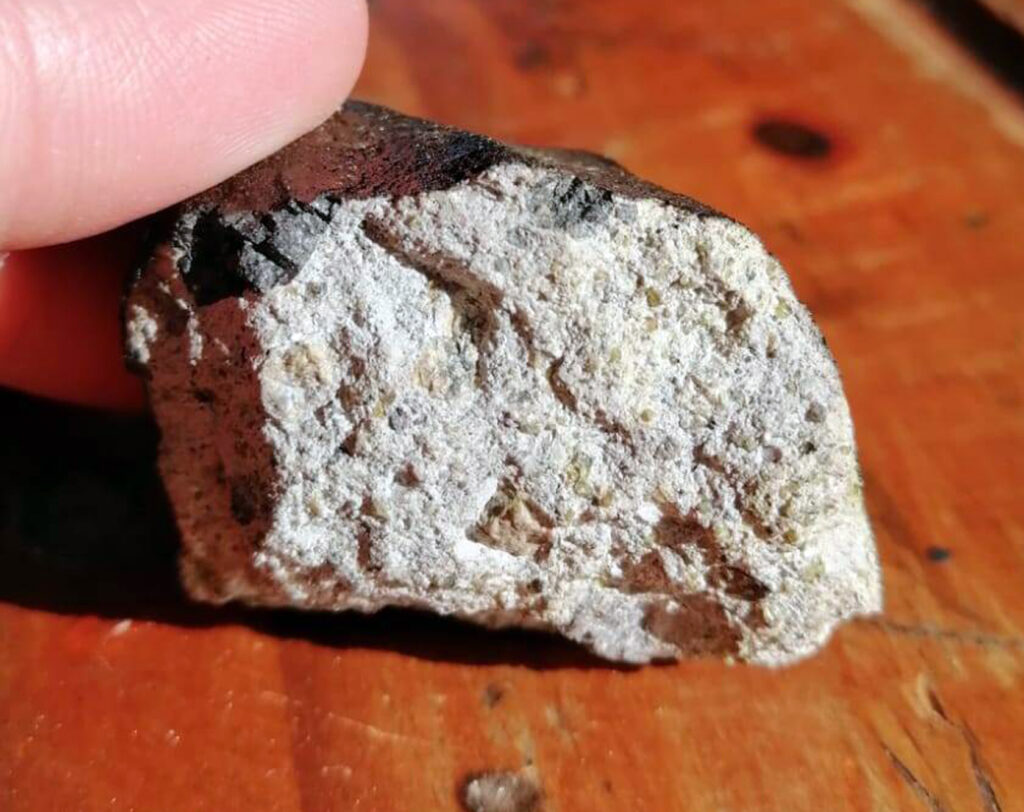
Photo: Jesica Botha/Snow Report (25 August 2024)
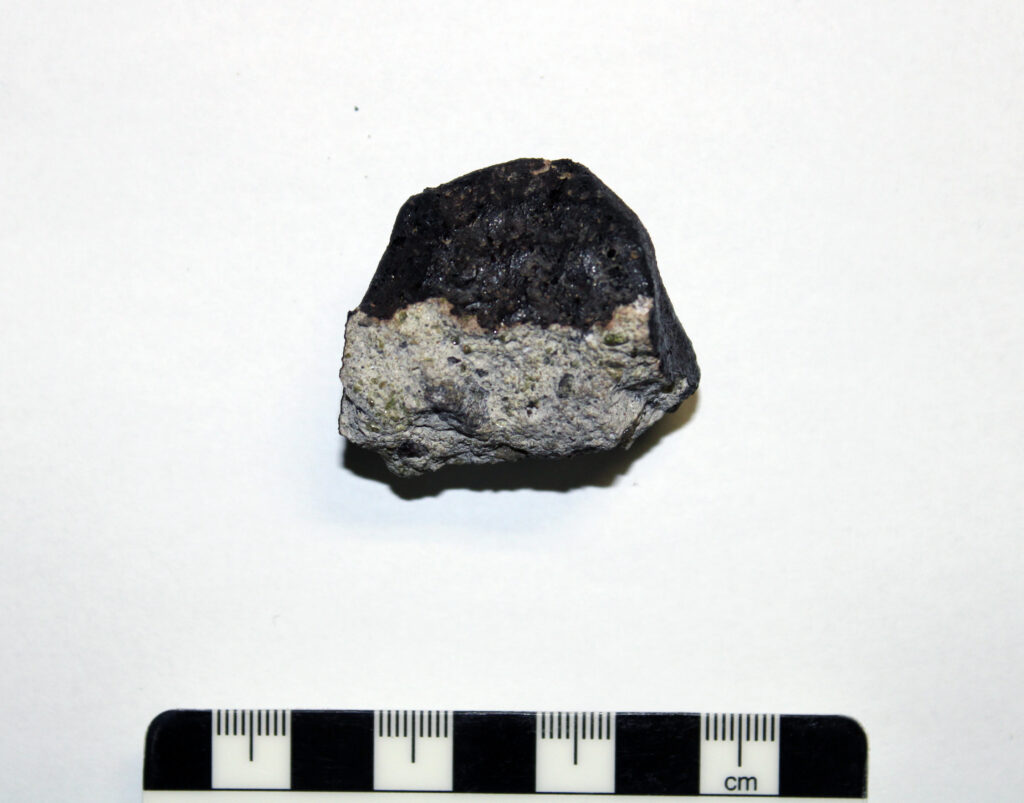
The largest fragment of the first find. Photo: University of the Witwatersrand, Rhodes University, and Nelson Mandela University
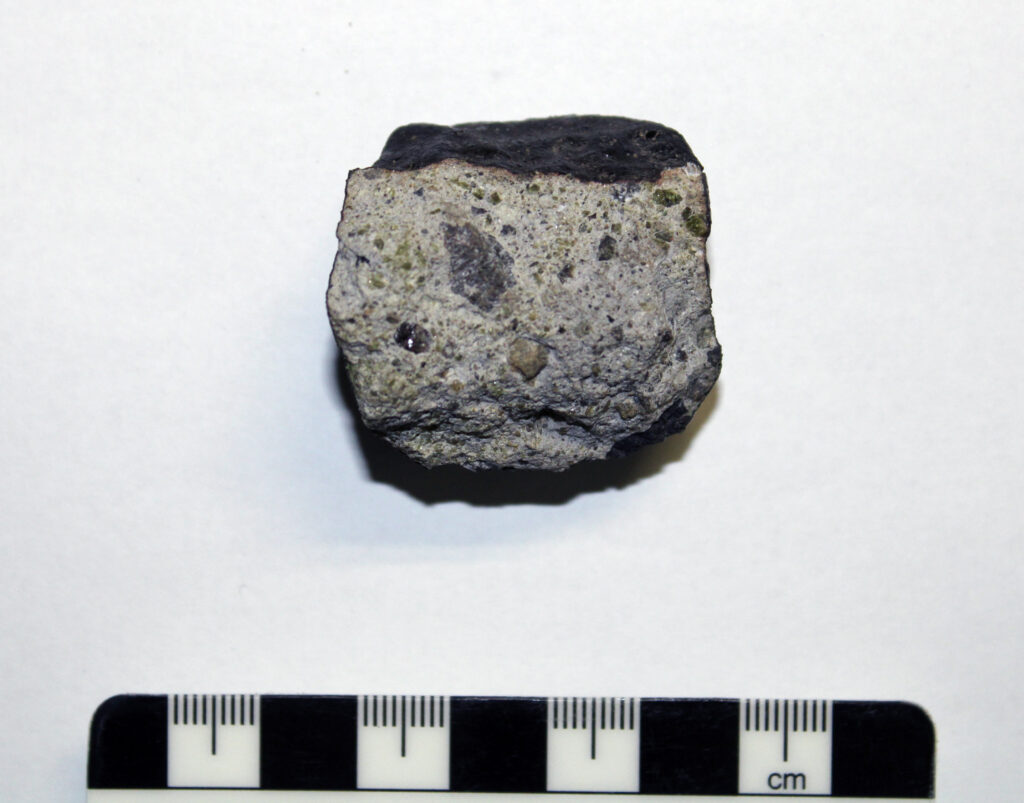
The largest fragment of the first find. Photo: University of the Witwatersrand, Rhodes University, and Nelson Mandela University
The largest fragment of the find is being presented to the press during a press conference at Nelson Mandela University on 3 September 2024. Video: Nelson Mandela University
THE BOLIDE
The daytime bolide, recorded from the dunes near Shark Point at St Francis Bay, Eastern Cape. The video shows more than 2.8 seconds of the end of the bolide’s luminous trail (traveling distance ~50 km) including several fragmentation events which indicates several meteorite masses which must have fallen. Video: Zoë van der Merwe
The bolide recorded from Port Elizabeth (Gqeberha) by Elsje. Video: Elsje/Snow Report
Bolide recorded from Douglas Northern Cape. Video: Green Pasture Pets
Bolide recorded from Oviston Eastern Cape. Video: Steve & Liza Pieces of our Past
MEDIA
Video: SABC News (25 August 2024)
Video: SABC News (26 August 2024)
Video: SABC News (3 September 2024)
Press conference on 3 September 2024

